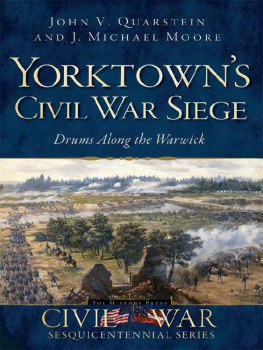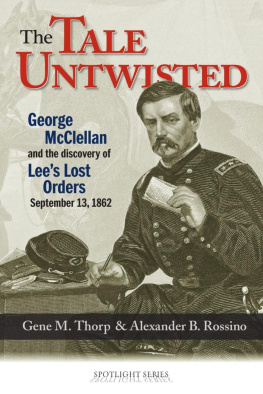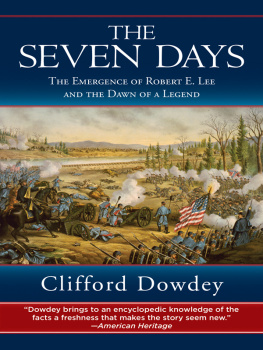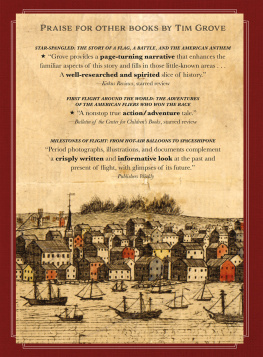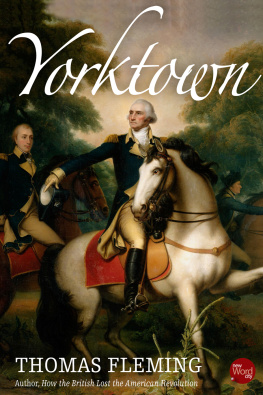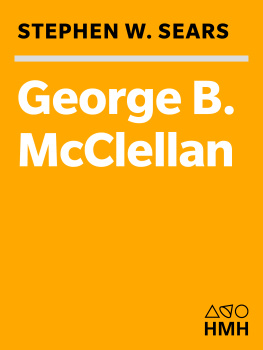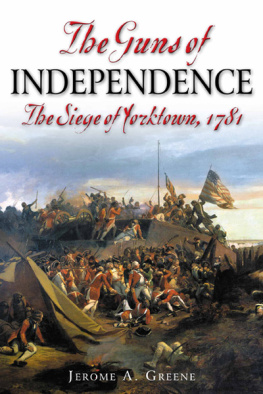

Published by The History Press
Charleston, SC 29403
www.historypress.net
Copyright 2012 by John V. Quarstein and J. Michael Moore
All rights reserved
Cover image: Battle of Dam No. 1, oil on panel, Sidney King, 1962. Courtesy of the Newport News Collection.
First published 2012
e-book edition 2012
ISBN 978.1.61423.591.0
print ISBN 978.1.60949.656.2
Library of Congress CIP data applied for.
Notice: The information in this book is true and complete to the best of our knowledge. It is offered without guarantee on the part of the authors or The History Press. The authors and The History Press disclaim all liability in connection with the use of this book.
All rights reserved. No part of this book may be reproduced or transmitted in any form whatsoever without prior written permission from the publisher except in the case of brief quotations embodied in critical articles and reviews.
To Our Fathers
Colonel Vernon Alfred Quarstein, USA (Ret.), PhD
and
James Marvin Moore
These men, in their own ways, served their nation well during war and peace. Following their military service, they both became educators and sought to share their vast knowledge with others. Their sense of duty, quest for excellence and committment to community gave me and Michael the wherewithal to create this volume. As an expression of the highest appreciation for who these men were, it is our privilege to dedicate Yorktowns Civil War Siege: Drums Along the Warwick to them. Our fathers have gone to a brighter place where trials and tribulations do not come, yet thankfully their legacies will always remain with us.
John V. Quarstein
8 June 2012
Contents
Acknowledgments
This book has actually been percolating in my head for over fifteen years. It is the culmination of all my scholarship, story-telling and preservation efforts during the past two decades. This tale is all about numerous sites that I have helped preserve and present: Lee Hall Mansion, Lees Mill and Youngs Mill, Endview Plantation, the Williamsburg Battlefield and Fort Monroe.
Since most of these preservation achievements were accomplished in the city of Newport News, Virginia, where I worked for over thirty years as the director of the Virginia War Museum, I must thank Ronnie Burroughs and Michael Poplawski, both of whom served as director of Newport News Parks, Recreation and Tourism, for all their support of my writing about Newport News history, as well as for aiding in the preservation of Civil War sites like Lee Hall Mansion. Thanks to their encouragement, the history in this volume can still be seen and enjoyed today.
J. Michael Moore is my co-author for Yorktowns Civil War Siege: Drums Along the Warwick. Michael and I have worked together for nearly fifteen years, and he has assisted me with my previous books. Not only have we been colleagues over these years, but he has also become a very good friend and great duck hunting partner. I so wanted Michael to help me write this book because he has several ancestors who served in the 15th North Carolina during the Battle of Dam No. 1. Sergeant John Thomas Dillard was wounded in action by a ball to the head at this battle on 16 April 1862. John Dillard served along the Warwick River with his brothers, Sergeant James Henry Dillard and Private Edward Dillard. Michaels family connections made my working on this volume and being on the battlefield with him ever more meaningful.

Lee Hall Mansion, Newport News, Virginia, circa 1938. Courtesy of the Library of Virginia.
My thanks must also go out to Julie Murphy for editing this volume, the fifth that we have worked on together. Once again, Julies excellent writing and editing skills truly enhance my style and presentation of this powerful history. Special thanks also to Julies mother, Anne Bobbitt Murphy, for providing documentation for several ancestors who served in the defense of the Peninsula and especially for the papers of Captain Vines E. Turner of the 23rd North Carolina. Turner, then a 2nd lieutenant, fought at the Battle of Williamsburg, serving in Earlys brigade. He participated in the desperate attack through the Custis wheat field to strike at Winfield Scott Hancocks brigade at Redoubt #11 on 5 May 1862. He somehow survived that bloody field and faithfully continued to serve his cause until Appomattox, writing truly compelling letters that provide great insights into the first phase of the Peninsula Campaign. Julies great-great-grandfather, William A. Blackley, fought at Dam No. 1, serving as corporal in Company E, North Carolina 15th Infantry, the same regiment as Michaels ancestors.
There are just so many others to thank and who are due my appreciation for supporting this book. Anthony McCarron and Jenn Hesse helped type the text. My friend Kimberlee, Jenns mother, offered friendly support that enabled me to focus on providing this thorough account of the days when the drums beat along the Warwick.
My son, John Moran, has an ancestor, 1st Lieutenant William B. Jones of the Peninsula Artillery, 1st Virginia Artillery, who fought at Lees Mill on 5 April 1862. He has several other Harwood ancestors who served in the Warwick Beauregards of the 32nd Virginia Regiment. John Moran provided many of the images found in this book. Other prints, photos and paintings that illustrate this volume are from the collections of Lee Hall Mansion, The Mariners Museum, Casemate Museum, Virginia War Museum, Virginia Historical Society and the Library of Virginia.
Michael and I decided to dedicate this book about the Peninsula Campaign to our fathers. Shortly after we began working on the text in the fall of 2010, Michaels father, James Marvin Moore, died after a long illness. Likewise, my father, Colonel Vernon A. Quarstein, USA (Ret.), PhD, USMA, class of 1950, also died early in 2012 after being ill far too long. Our fathers were both educators. Michaels father taught physics and mathematics at Newport News Shipbuildings Apprentice School, whereas my father, after his retirement from the U.S. Army, received his PhD in finance and taught at Hampton University, Old Dominion University and Saint Leo University. We learned a great deal from their knowledge and experience. Accordingly, we proudly dedicate Yorktowns Civil War Siege: Drums Along the Warwick to their memory. Our fathers were truly outstanding individuals who gave each of us the wherewithal to achieve positive actions that continue to contribute to our community.
John V. Quarstein
Historian, city of Newport News

Edward (in both left and right images) and Mary Morgan Dillard. Courtesy of Robert Dillard Mallison.
Introduction
The spring of 1862 was a dark time for the Confederacy. Defeats had come on the Mississippi River, in Tennessee and along the Carolina coast. A powerful Union army was poised outside Washington, D.C., ready to strike a blow against Richmond, the Confederate capital. The events that took place that spring along the rivers, swamps and fields of the Virginia Peninsula were initiated to do just thatcapture Richmond and end the war.
Next page
